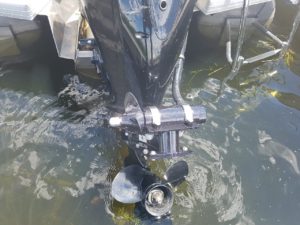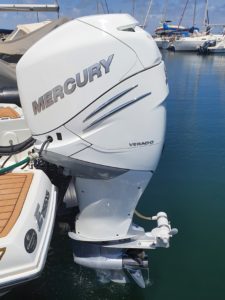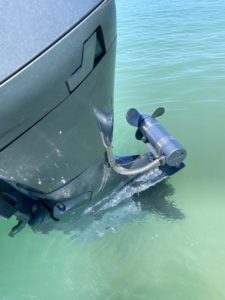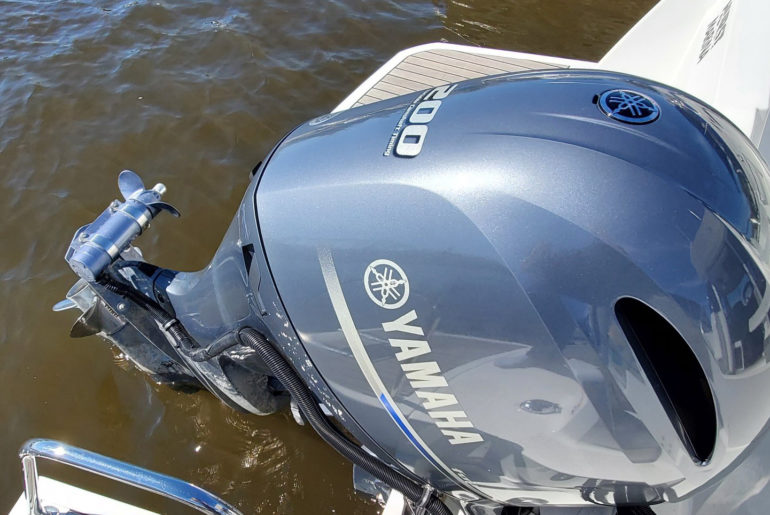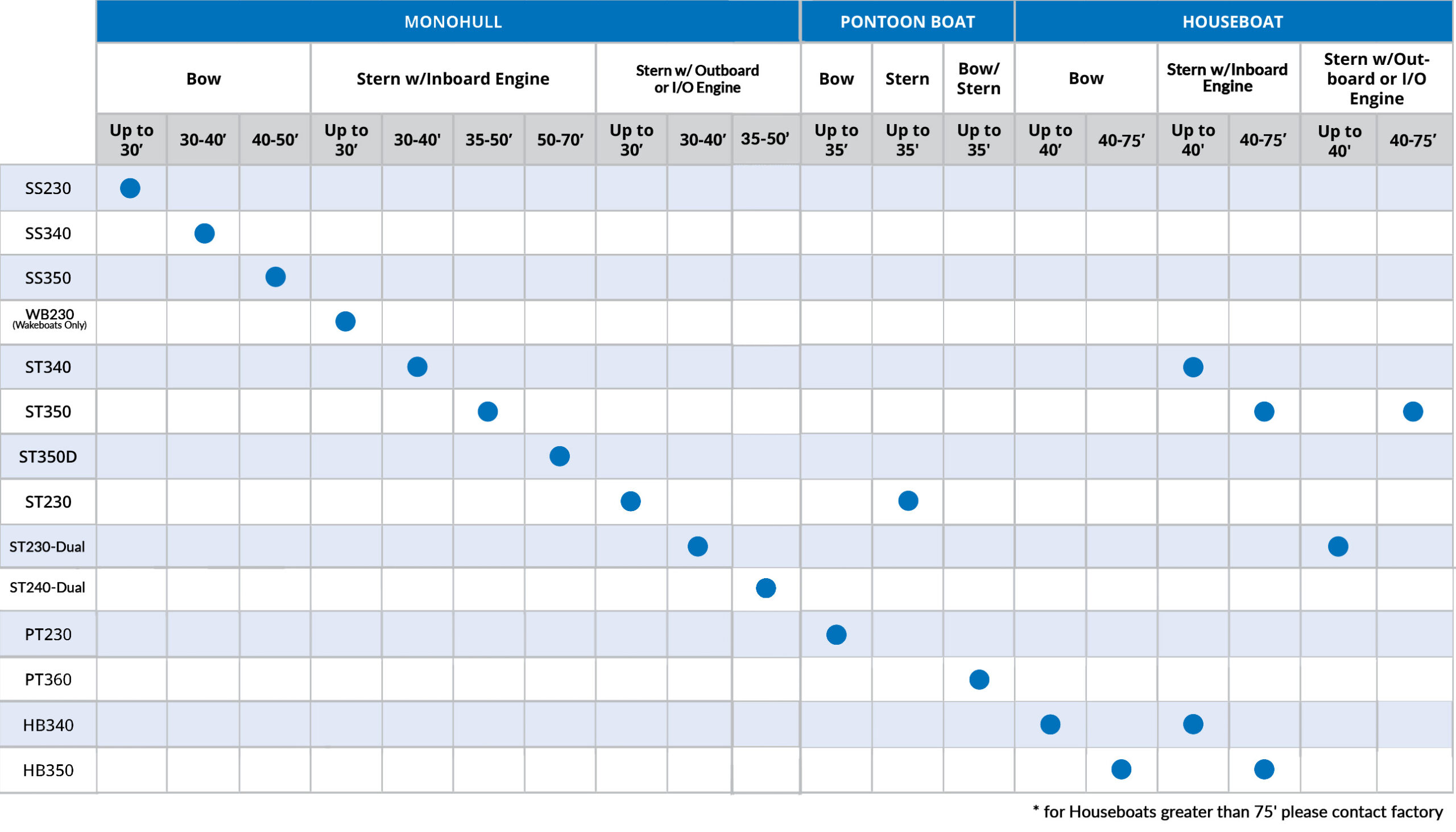By: Jon Blaicher
How to use a Sideshift Outboard-Mounted Stern Thruster on a smaller (sub 30′) single-engine boat.
Docking a boat can be one of the most intimidating aspects of boating… especially on a single engine, outboard powered boat with a bit of freeboard. Outboards typically have a single propeller, with limited low-rpm thrust. This means you often need to use the throttle to rev the engine up to move the boat in the desired direction. However, most outboards vent exhaust gasses through the prop shaft at any rpm over 1500. In the forward gear the propeller has plenty of grip but in reverse, exhaust gasses can ventilate the propeller, causing it to slip. This means an outboard powered boat does not back up or respond to reverse throttle very well, making docking even more difficult. One affordable solution is a stern thruster.
The benefits of a bow thruster seem obvious to anyone who has seen one in action. Push the operational joystick left or right, and the bow of your boat will move in the desired direction. But bow thrusters are not always practical on every style or model of boat.
Did you know a stern thruster can also be a tremendous help with maneuvering and docking a boat, even without a bow thruster? Of course, maximum maneuverability can be achieved with both bow and stern thrusters. But for smaller single engine boats, especially those with outboard power, a stern-only thruster can be very useful for positioning control in a variety of docking situations.
The technique is a bit different from a bow thruster, but in practice can be just as effective, if not more effective than a using bow thruster. Here is one example of how to dock with the help of a stern thruster.
Step 1: Using the steering wheel and a small amount of forward throttle to point the bow towards the dock. Note; as the bow moves towards the dock, the stern will move away from the dock.
Step 2: With the steering wheel still turned towards the dock, push stern thruster joystick to move the stern left towards the dock as well while using some forward throttle to keep the bow pointed at the dock.
Step 3: Once the bow is getting close to the dock, put the boat in neutral, and if single-handing walk forward and tie bow to dock, or have a first mate tie the bow off.
Step 4: With the remote key fob, you can now use it from the dock to gently bring the stern in and tie it off, or use the thruster joystick from the helm to push the stern against the dock and tie up.
Example situation
The key is to keep the bow pointed at the target regardless of wind, using the steering wheel and main engine, and use the thruster to control the stern and straighten the boat
Step 1 Action: Use steering wheel with the engine in forward gear at idle to point the bow towards the dock. In this case by turning the wheel to the left towards the dock.

Step 1 Reaction: When the engine is pushing the boat forward, the bow will move towards the dock but the stern will move away from the dock.
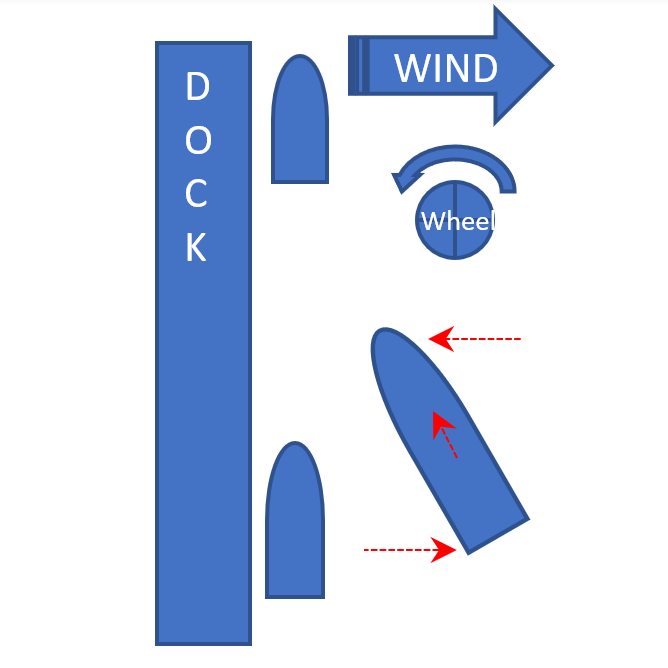
Step 2 Action: With the steering wheel still turned to the left, push stern thruster joystick to the left to move the stern left towards the dock.

Step 2 Reaction: When activating the thruster to port, the stern will move to port – towards dock along with the bow.
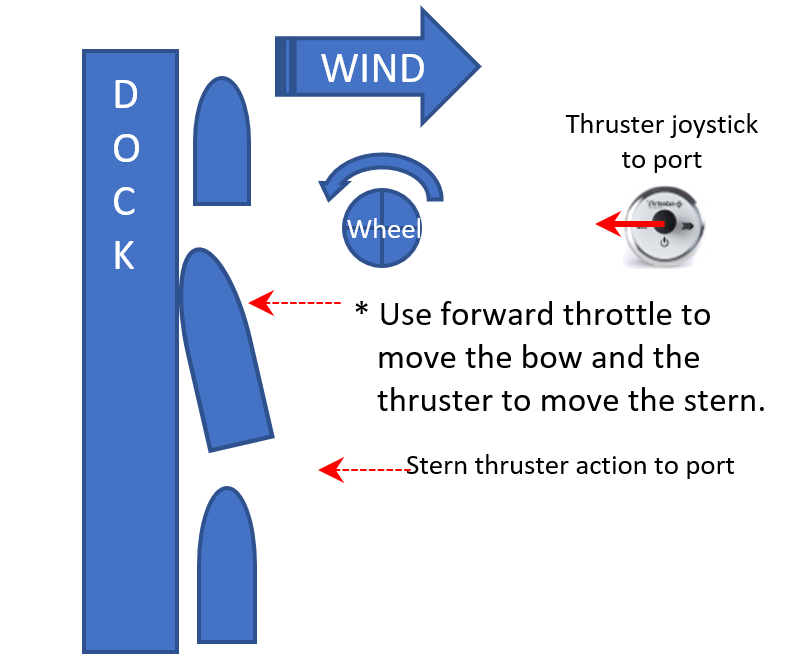
Step 3: Put boat in neutral, walk forward and tie bow to dock.

Step 4: From the dock use the wireless key fob to push the stern in with the thruster. Tie the stern off.

By using a combination of forward throttle and stern thruster operation, one can effectively control the position of the bow and stern of the boat. The stern thruster can also provide direct control of the boat when backing into a slip.
Benefits of the Sideshift ST230-OB stern thruster:
- Single handed control with wireless joystick and remote key fob.
- Same degree of positioning control as a bow thruster – in some cases even more.
- Almost invisible!
- Out of water on plane = lower drag = higher speed capability even with external mount.
- No need for bow thruster.
- Super easy installation on the cavitation plate of your outboard or sterndrive.
- Far aft location on cavitation plate maximizes leverage and effectiveness.
- Can be installed at the dock without removing boat from the water!
- Easy half-day DIY kit project with only one person.
- Zero holes in the hull of the boat!
- Can be run off existing engine battery.
- ST230 has enough power for most boats up to 30 feet in length.
- Less expensive than a bow thruster system!
- No need for an additional battery!
